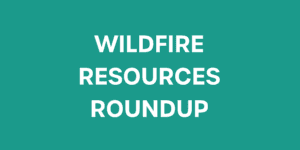As wildfire, drought and invasive species increasingly impact native ecosystems, plants and animals, our remaining natural and cultural Hawaiian heritage is more threatened than ever.
In this joint webinar hosted by the Pacific Fire Exchange and the Pacific Regional Invasive Species Climate Change, we tackle the climate crisis in Hawai`i and how this affects the risk of wildfire as well as the impacts to people and the archipelago’s unique resources.
In this Pacific Fire Exchange talk story Q&A session, we speak with Dr. Clay Trauernicht and Dr. Alyssa Anderson, University of Hawai`i at Mānoa about wildfire in Hawai`i in the context of Hawaiian language newspapers as well as the historical landscape changes of the 20th century.
In the Pacific Fire Exchange’s (PFX) Partner Perspective series, PFX coordinator Melissa Chimera gets to know Assistant Fire Chief of Operations Darwin Okinaka, starting as a responder for Hawai‘i County Fire Department and now a community liason with landowners and partners after the 2021 Mana Road fire, one of Hawai‘i’s largest in history.
In this Pacific Fire Exchange talk story Q&A session, we round up the latest research, past and present for managers and landowners wanting to understand more about how our four-legged friends (goats, sheep, cows, etc.) if managed properly can help reduce blazing and wildland fire. This month’s science share out and conversation was with Dr. Clay Trauernicht, University of Hawai`i at Mānoa Ecosystems and Fire Specialist; Raia Olsen of O‘ahu Grazers and Dr. Elliott Parsons, formerly with the Department of Land and Natural Resources. They presented the how-tos on hiring island professional grazers and lessons learned for contract grazing.






